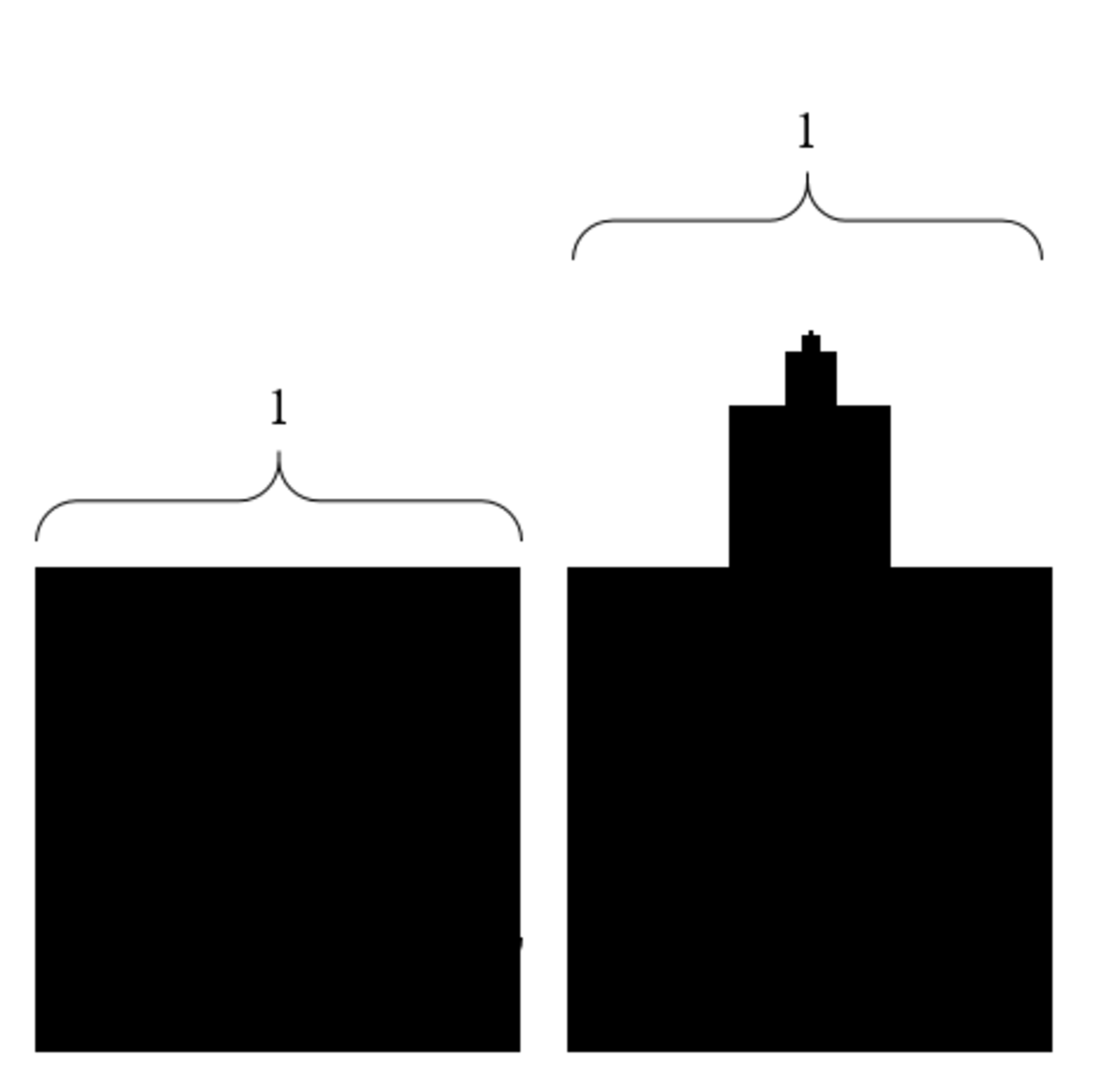Fractal Fraction
Jim has a unit square.
- On top of this unit square, he places a square with side length equal to 3 1 the side length of the square below.
- On top of that square, he places another square which again has side length equal to 3 1 the side length of the square below, and so on.
- He repeats this process until he has created an infinite stack of diminishing squares--a fractal.
What is the ratio of the perimeter of the fractal to the area of the fractal?
This section requires Javascript.
You are seeing this because something didn't load right. We suggest you, (a) try
refreshing the page, (b) enabling javascript if it is disabled on your browser and,
finally, (c)
loading the
non-javascript version of this page
. We're sorry about the hassle.
3 solutions
Why are u taking 2/3 in perimeter plzz explain
That's the next smallest square, with side length 1/3. We already accounted for its top side, so the only sides remaining on the perimeter are the left and right sides. Since both are 1/3, the 2/3 represents the sum of the left and right side of every smaller square.
The area after n interactions may be written as
A n = 1 + ( 3 1 ) 2 + ( 3 1 ⋅ 3 1 ) 2 + ⋯ + ⎝ ⎜ ⎜ ⎛ 3 1 ⋯ 3 1 n times ⎠ ⎟ ⎟ ⎞ 2 = i = 0 ∑ n ( 3 1 ) 2 i = 1 − 9 1 1 − ( 9 1 ) n + 1 = 8 9 − ( 9 1 ) n ,
which will clearly give us A n n → ∞ 9 / 8 . For the perimeter
P n = 4 + ( − 3 1 + 3 3 ) + ( − 3 1 ⋅ 3 1 + 3 3 ⋅ 3 1 ) + ⋯ + ⎝ ⎜ ⎜ ⎛ − 3 1 ⋯ 3 1 n times + 3 3 ⋅ 3 1 ⋯ 3 1 n − 1 times ⎠ ⎟ ⎟ ⎞ = 4 + i = 0 ∑ n − 1 ( 3 1 ) i − i = 1 ∑ n ( 3 1 ) i ,
which actually shows us that
P n = 5 − ( 3 1 ) n n → ∞ 5 .
We want
( A n P n ) n → ∞ = 9 / 8 5 = 9 4 0 .
The Perimeter = 3 + 4/3 + 4/9 + 4/27 + ..... = 3 + (4/3)/(1 – 1/3) = 5. The Area = 1 + 1/9 + 1/81 + .... = 1/(1 – 1/9) = 9/8. The ratio of P/A = 5/(9/8) = 40/9.
It is important to first note that the sum of the lengths of the top sides of the squares will always be 1. From there, it can be seen that the
perimeter
of the shape is equal to 4 +
3
2
+
9
2
...
From there, it can be seen that the
perimeter
of the shape is equal to 4 +
3
2
+
9
2
...
S = 3 2 + 9 2 + 2 7 2 ...
3S = 2 + 3 2 + 9 2 + 2 7 2 ...
2S = 2
S = 1
Therefore the perimeter of the fractal is equal to 4 + 1 = 5 .
The area of the fractal is 1 + 9 1 + 8 1 1 ...
Another series summation can be used to solve this.
S = 1 + 9 1 + 8 1 1 ...
9S = 9 + 1 + 9 1 + 8 1 1 ...
8S = 9
S = 8 9
So the ratio is 5 to 8 9 . This can multiplied out by 8 to give a nice integer ratio, and arrive at the final answer of 40:9 .